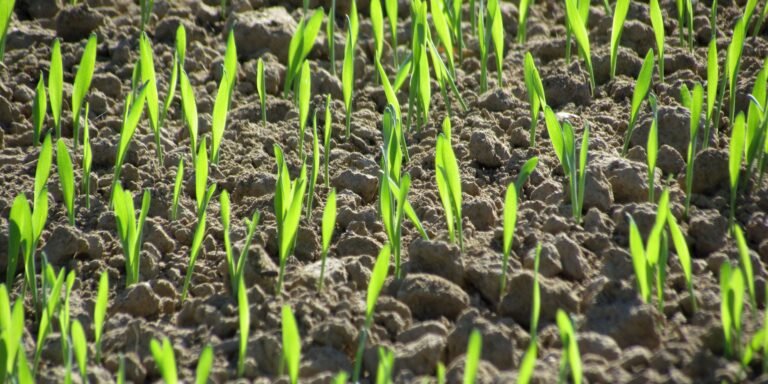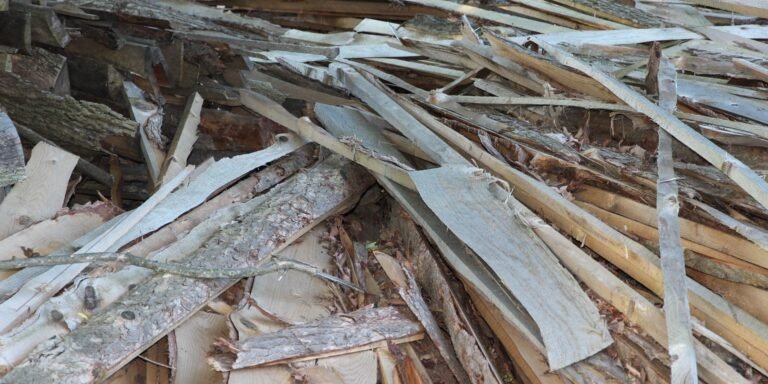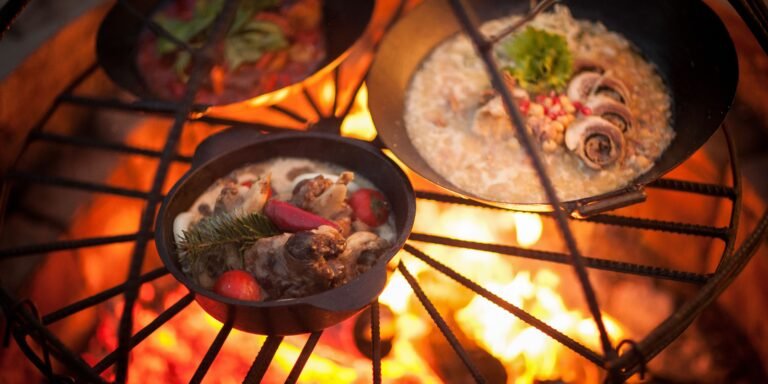10 Types Of Wood That Burn the Longest
This post may contain affiliate links, full disclosure here.
During the cold winter months, burning firewood creates a cosy atmosphere. But, more importantly, it emits enough heat to keep you warm in the freezing temperatures. As a result, you should know which firewood will burn the longest and keep you warm on a cold night.
The primary factors influencing firewood burning capacity are heat value, density, and moisture content. Ideal firewood has a high heat value, a dense structure, and a low moisture content. This wood burns the longest and produces the most heat.
This article will look at the best firewood to burn and which to avoid.
Choosing Firewood
The heating value
The heating value of a substance refers to the amount of energy per mass that it can produce when combusted. In this case, it is equivalent to the heat emitted by burning firewood.
This property of a specific type of firewood is intrinsic, which means it cannot be changed. It is the same for that specific type, and no treatment can change it. It is typically measured in BTU per pound.
When selecting firewood, choose a type with a high heating value, such as black locust or oak. These woods are the most efficient because a small amount of them can provide more heat than other types with low heating value.
Softwood vs. Hardwood
Another criterion to consider is the density of the firewood; this tells you how compact the wood is. Firewood is classified into two types based on this property: hardwood and softwood.
Hardwood is more expensive and heavier than softwood. It is more compact, which makes it more difficult to cut and chop into pieces. This compactness, however, allows this type of wood to burn for a longer period of time. Because it contains more material, it lasts longer than softwood.
Softwood, on the other hand, is lighter and easier to work with. However, due to its toxicity, it should not be used as firewood.
It burns quickly and produces little heat.
The structure of a tree in the wild is a quick way to tell whether it is hardwood or softwood. Hardwood trees have leaves that grow in all directions. Softwood trees, on the other hand, have needles instead of leaves and grow straight with only a few branches.
Unseasoned vs. Seasoned Wood
Another factor to consider is the moisture content of the firewood. Ideally, your firewood should be low in moisture to facilitate ignition and make the burning process more efficient at providing heat.
Initially, freshly cut wood has a high moisture content – around 60%. To make it usable, the water percentage must be reduced to around 20% through a process known as seasoning.
Seasoning is the process of drying wood by leaving it out in the sun for a few months to allow most of the water to evaporate. The process usually takes six months to complete. This length, however, may vary depending on the climate in your area.
As firewood, properly seasoned wood, particularly hardwood, is the best choice. Unseasoned wood can still be used, but it will be less efficient and last longer than seasoned wood.
Best Firewood Types
Not all woods are suitable for use as firewood. You may prefer one type over the others depending on the amount of heat required and the desired duration of burning. The following are some of the best types of firewood to consider:
Black Locust
This wood has a high heating value, making it an excellent heat producer. Because it is very dense, it can burn for a long time. When burned, it emits a light fragrance and produces little smoke.
It is one of the most suitable types of wood for use as fuel. However, it does not grow naturally in most areas. It is only found in Arkansas, Missouri, and the Appalachian Mountains.
It is also suitable for construction purposes when camping in the wilderness due to its high density or compactness.
Hickory
Wood from the hickory family of trees, like pecan trees, is well known for producing a lot of heat. It produces high-quality coals and emits little smoke when burned, making it ideal for campfires and even BBQ grills.
This type of wood is dense and devoid of moisture, making it difficult to split and chop. However, because of these properties, it can last longer and burn more efficiently. Because it is a common tree, you can find it in almost any forest.
Oak
Oak is a good all-around wood that is fairly common. It has a high heating value and density, which makes it ideal for providing consistent, long-lasting, and high-quality heat. It has a low spark and smoke output, making it ideal for use indoors.
White and red oak are the most common types of oak. Both are excellent sources of firewood. However, because of their high density, they may be difficult to ignite. As a result, you can start a fire with softwood and then add oak wood to fuel it.
One of the most popular types of firewood is oak. It performs admirably, especially when properly seasoned.
Beech
Beech is high-quality firewood that maintains a consistent level of heat for an extended period of time. It produces excellent coals while emitting little smoke and spark. Its overall quality is comparable to oak wood.
The only disadvantage of this wood is its high moisture content. Before you can light it, it must be properly seasoned and thoroughly dried. Furthermore, it is the most difficult firewood to split, even harder than black locust and oak wood.
Ash
Ash is arguably the best type of firewood to use. It produces a lot of heat and has a long-lasting flame. It is also easier to light than the other types of firewood mentioned previously. Furthermore, it does not need to be seasoned or dried to burn effectively, so you can use relatively fresh Ash tree wood as firewood.
Cherry
Cherry only produces a moderate amount of heat; it is not as effective as heavier, denser woods such as Oak and Black Locust. However, when burned, it emits a pleasant aroma.
In addition to its fragrance, it does not produce a lot of sparks when burned, making it excellent indoor firewood. It is an excellent fuel for a fire that is intended to create a pleasant atmosphere rather than to provide heat.
Maple
Maple produces a good amount of heat that can last for a long time. Maple, like other types of hardwood, is difficult to split. Furthermore, it is difficult to ignite, so you will need to start a fire with softwood before using it as a fuel.
Birch
Birch only provides average heat and burns relatively quickly, making it unsuitable for use as the primary firewood. However, because of its flammability, it is excellent for starting and sustaining a fire.
When burned, birch produces bright flames and produces only a small amount of heat, making it ideal for use indoors.
Rowan
Rowan’s best feature is that it burns slowly. As a result, it can provide long-lasting, continuous, and moderate heating. Because it performs well in all types of fire, it can be your go-to firewood.
Pine
Despite being a softwood, pine makes excellent firewood, particularly for recreational purposes such as camping. It produces a fair amount of heat while also producing a significant amount of smoke. It’s great for outdoor campfires, but it shouldn’t be used indoors or for functional purposes like cooking.
Worst Firewood Types
Some types of firewood may not be as good as others, but they can be used if you don’t have any other options. However, the types listed below are not suitable for providing long-lasting heat and are even hazardous to use, so you should avoid them.
Green Wood
Green wood is one that has been freshly cut. Although there are some exceptions, freshly cut wood is frequently inefficient at maintaining or even starting a fire. Because it has significantly higher water content, you must season it for at least six months before using it.
The sap in the wood is a good indicator of when it is ready to be used; if it is no longer visible, the wood is ready; otherwise, the wood needs a little more time to dry out.
Poisonous Wood
Avoid wood with vines at all costs. This wood is most likely poison ivy, poison sumac, poison oak, or another type of tree with poisonous components.
Poisonous wood contains the irritant urushiol. When the irritant is burned, it mixes with the smoke, and when inhaled, it can cause severe lung irritation and severe allergic respiratory problems.
Driftwood
Driftwood is salt-saturated in addition to being extremely damp. Lighting it will be difficult. Furthermore, when burned, it emits a thick smoke laden with toxic chemicals that, if inhaled in large quantities, can be fatal.
Laburnum
Laburnum is a wood species that produces very little to no heat. Instead, it emits a massive amount of smoke. Although it is not particularly hazardous, burning this type of wood is a waste of time.
Poplar
Poplar and laburnum are very similar. It is inefficient at producing heat and emits a large amount of smoke. It is also extremely difficult to light, so don’t bother with it.
Types Of Wood That Burn the Longest Bottom Line
You should choose the best firewood to use, whether for heating or simply to create a cosy atmosphere. Different types of firewood have different burn times and heat intensities. As a result, make an informed decision.
Wood with a high heating value, high density, and low moisture content is ideal in general. Stick to firewood with these properties – you can use the list provided in this article as a guide. You are free to use other types of firewood; however, be careful not to pick the worst ones by accident in order to avoid unnecessary inconveniences.







